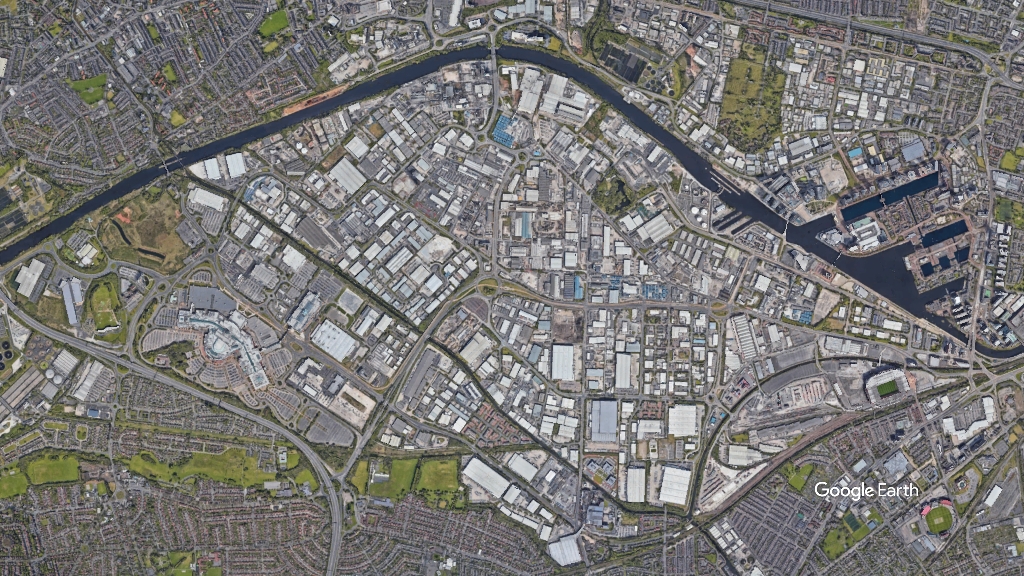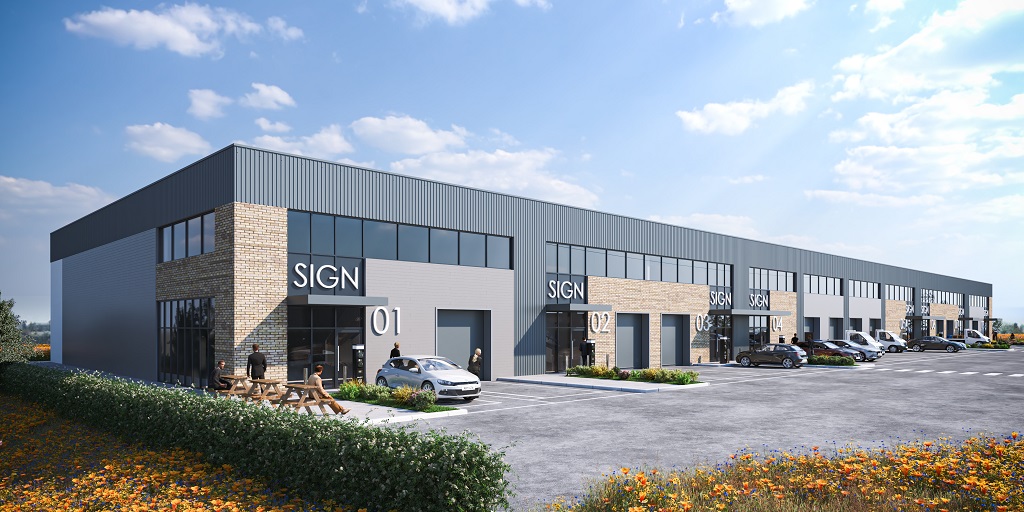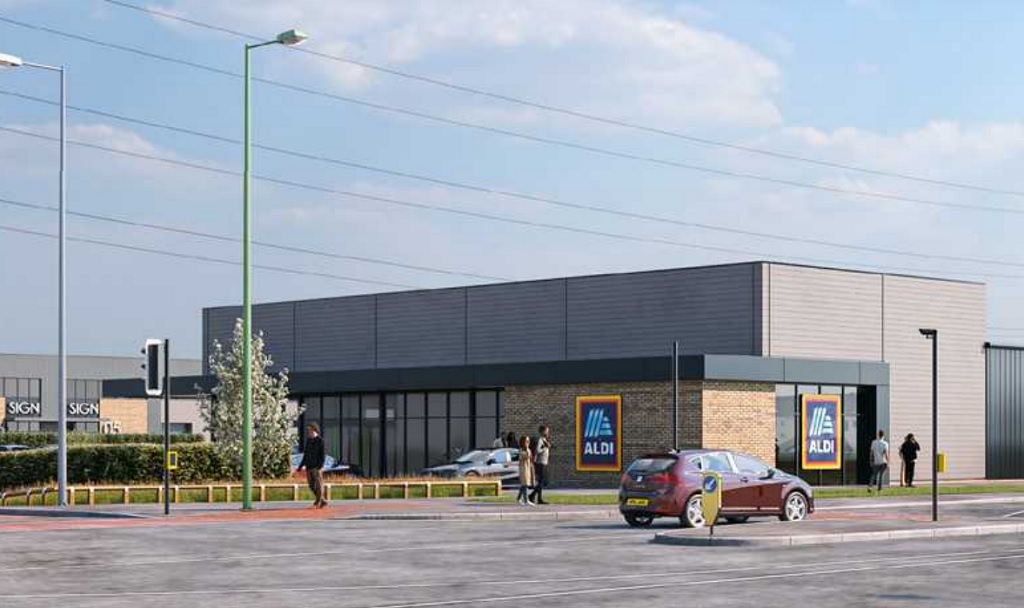MIPIM | Trafford Park carbon cutting key for luring next generation
 Trafford Council’s plan to green one of Europe’s largest industrial parks is a proactive step to make a dent in the authority’s carbon footprint and make the estate more attractive to talent, Arup director Jane Healey-Brown told Place North West.
Trafford Council’s plan to green one of Europe’s largest industrial parks is a proactive step to make a dent in the authority’s carbon footprint and make the estate more attractive to talent, Arup director Jane Healey-Brown told Place North West.
Yesterday saw Trafford Council unveil an ambitious £1.2bn plan to tackle infrastructure issues at Trafford Park, home to more than 1,300 companies.
- Stay up to date on MIPIM news. Visit Place North West‘s MIPIM Hub
Transitioning to green energy, installing sustainable drainage solutions, and encouraging active travel could reduce annual emissions from 245,161 tCO2 to 42,656 tCO2 between now and 2038, according to a report to Trafford Council’s executive.
The authority said this opportunity was the biggest the borough had to make an “impact at scale” as it bids to be net zero carbon by 2038.

Arup’s Jane Healey-Brown advises Trafford Council
Taking an environmentally focussed approach to an asset that is naturally carbon intensive – but that the council doesn’t actually own – is an innovative approach, Healey-Brown believes.
“We all know we are on the road to net zero, but a lot of the emphasis is around retrofitting existing buildings and reaching net zero in new buildings.
“[At Trafford Park] the council is taking a look at the infrastructure and working with businesses to see how they can buy into it as part of a mindset shift.”
Many large companies that occupy the park are already making inroads to reduce their impact on the environment and Trafford’s greening strategy could encourage smaller businesses with fewer resources to start their own journeys, according to Healey-Brown.
“A lot of industrial estates are full of SMEs who find it hard to engage with the agenda and one of the interesting things about looking at an infrastructure-first approach is that it starts to engage some of the SMEs around net zero.”
Arup was appointed by Trafford Council last year to look at how to repurpose the space around the buildings in Trafford Park.
The approach is reasonably straightforward, Healey-Brown explains. It involved coming up with ways to make the complex a place that is easier to get around without the need for a car.
Arup’s study identifies “a lack of convenient and safe crossing points” and states that “many junctions and desire lines lack controlled crossings, which creates severance and deters pedestrian activity.”
The Bridgewater Canal towpath provides a traffic-free route through Trafford Park but is “isolated” and creates a “real and perceived safety issue” that deters people from using it, especially women, Arup found.
One of the standout ideas within the strategy proposes converting disused rail lines into green routes for pedestrians and cyclists. Although more than 1,000 companies operate out of Trafford Park, connectivity is still not great other than by road.
At almost 1,200 acres, the estate is so vast that, once alighting at Trafford Park train station, some workers would need to walk as far as four miles to reach their place of work.
The recent introduction of a Metrolink line that cuts right through the park was welcome, but many commuters are put off by the fact that, in order to travel there by the tram, they have to change at Cornbrook, slowing the journey.
Improvements by train and tram fall outside Trafford Council’s remit and will have to be led by Transport for Greater Manchester. Without improvements to public transport, much of the impact of improved active travel infrastructure at Trafford Park may be blunted.
Workers are much more likely to walk or cycle the relatively short distance from the tram stop than ride all the way from home.
Lowering carbon by making it easier for people to leave the car at home is one aim of the plan. Another is to make the park more attractive to green-minded businesses with environmentally conscious workforces.
“The perception of an industrial park that has got those design principles is going to be really important in terms of attracting future businesses,” said Healey-Brown.
“We are increasingly seeing larger multinationals that have got ESG plans and recognise the increasing demands of workers.”
She added: “They want to see that the environment is attractive and is a place they can get to in a way that is safe and cost-effective.”
A great deal of lobbying, corralling, and persuasion will be needed to pull together the £1.2bn of funding that Trafford Council estimates will be needed to implement the changes and significantly reduce the park’s carbon impact.
However, despite the funding hurdles, Healey-Brown believes projects like the Trafford Park greening strategy could pave the way for a more sustainable future for the nation’s industrial parks.
“I think it is scalable. Some of the principles around repurposing active travel routes and green infrastructure, whilst maintaining the HGVs access, would apply anywhere.
“I think this is going to be an area where there will be shared learning.”
Place North West MIPIM 2023 coverage is sponsored by Together.





With the developments at Trafford Waters creating many more residential properties on Trafford Parks doorstep, the idea of making it more accessible on foot and bike seems a logical step.
By Anonymous
When I read this sort of stuff I have to laugh.
By Anoymous